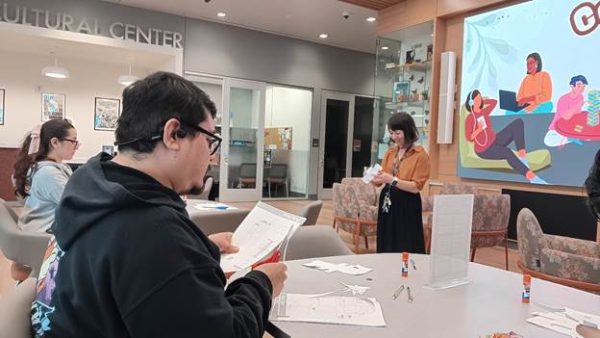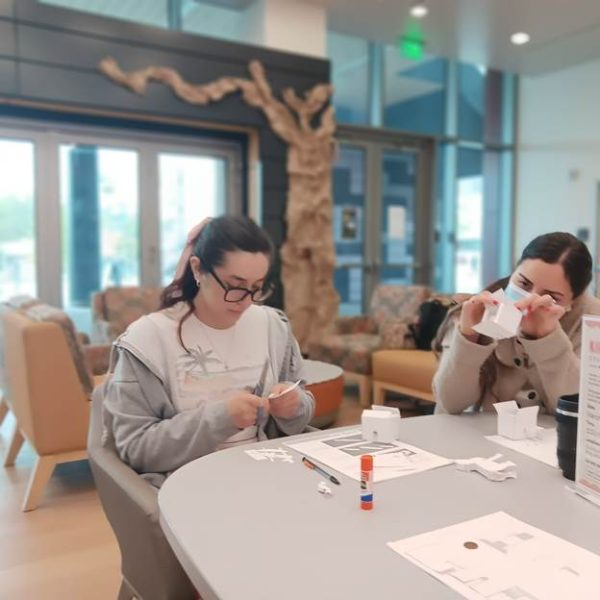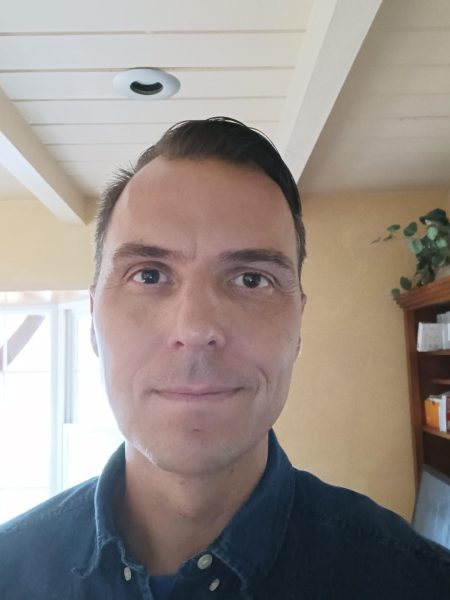On March 26, in the MultiCultural Center, professor of fine arts Melissa Macias, introduced attendees to a 400- year-old Japanese art form to show students how to develop their own style using another’s heritage.
Dating back to the 17 century, karakuri is the Japanese art of mechanized puppetry, or automation. Derived from the words “kara,” which means empty and “kuri,” which means mechanism, the workshop was to encompass the heritage and elements of craftsmanship, artistry and engineering. Macias explained that the goal of the event was two-fold: First to introduce the concept of “Cultrama”, an event that takes place in the fall semester that fuses art and literature. Second, was to get people connected with manual artwork while exposing them to different cultures and levels of diversity that are seen on campus.
Macias, being part Japanese and part German, shared with students her relationship to karakuri as she grew up surrounded by models of intricate puppets and clocks. Though finding a connection with one’s own culture was the main goal, Macias wanted students to express that connection in new ways as they were helped by another culture guiding them. Using various types of craft paper to create a mechanical polar bear, students were encouraged to use their own interpretations on how the product should look and function in the end, allowing them to use elements of another person’s heritage to express their own creativity.

Though art offers college students an enriching experience that could benefit them later in life, some are still reluctant to register for a class unless it’s necessary for transfer or graduation.
When asked what art can teach students, Macias replied, “I thought I was going to be a science or math major, but it wasn’t until I took my first full on art class that I decided to shift gears. I still took math classes and minored in math, but it wasn’t those classes that made me think as critically. It was art that really pushed my critical thinking because there wasn’t just one way to solve the problem, there were infinite ways of solving the problem.”
The world today is filled with problems, but Macias believes art helps us solve them by finding connections and fostering creativity. Moreover, art can help a student study by seeing patterns, being open to new approaches and learning to express their perspectives to others.

34-year-old HVAC major Sergio Gomez would agree. Gomez found his way to the center due to an inconvenience with parking causing him to buy a day pass. Having extra time on campus, Gomez decided to head to the MultiCultural Center where he saw the event take place, and found it to be interesting.
Dealing with electrical engineering and technical math, Gomez can relate to the statements made by Macias about patterns and relations. Though codes and instructions are important, Gomez is learning that making fine tweaks to get things to move is part of the job.
“We are always [adjusting] and mortifying the schematics to make it work,” Gomez said.
Art also can get students to explore areas of leadership or personal growth as they learn new skills, embrace failure, and get out of their shell.
“I have students [in my class] that are super quiet and stand up against a wall and don’t want to take a leadership role, but they learn to push themselves within that space and have uncomfortable talks concerning their work,” Macias said.

18-year-old business major, Ashely Hradecky also sees the benefits of art and finding connections to help with her studies.
Seeing the project as inconspicuous was surprising by the great lessons it revealed.
“I learned how to make a moving thing out of paper and that was interesting to me,” Hradecky said. “This showed me that just a piece of paper can turn into a box which can [become] a moving polar bear. I think seeing that progress showed me that in business, small things can have a really big impact.”
Workshops like these also offer quiet time for students to both reflect and process their day. Unlike the library where one is in a studious and perhaps serious mood, an activity like this can help a student unwind. “This event was really insightful to me, and it helped me to de-stress, and I think that a lot more students should come and see what events are happening,” Hardecky said.
In the end Macias would want all students to realize what Mt. SAC is offering them, understanding the various resources they have to connect, network and explore which will serve them later in life.
“I want them to just use all the resources this campus has,” Macias said. “There’s so much and it’s one of the things that made me want to work here when I was part-time. You realize there’s a farm on campus, there’s a taxidermy lab in the science department, there’s printmaking projects … the more they use these spaces the more they get to network [but] also to grow. You just get busy as a student thinking about your classes [and] forget how much is out there.”



